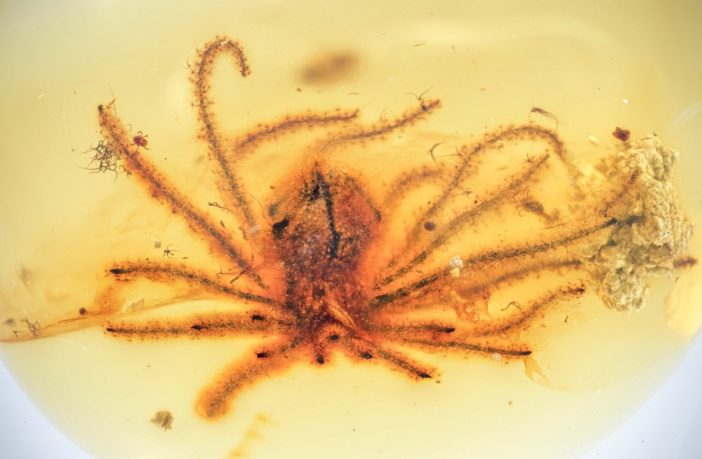An international research team has discovered 100-million-year-old fossil flowers preserved in amber, showing that some flowers found living today in South Africa have remained unchanged since the time of the dinosaurs.
The flowers, discovered by experts from The Open University, Qingdao University, and others, are nearly identical to those of modern Phylica species, which are part of the Cape Fynbos flora that is exposed to frequent wildfires.
The fossils were found alongside long-extinct burned plants, pointing to wildfires being an important aspect of early flower evolution.
The sudden appearance of flowering plants as fossils in middle Cretaceous time was described by Charles Darwin as an “abominable mystery” and usually, flower fossils are rare, not well preserved and come from an extinct group of species.
However, this study, published in Nature Plants, found an exception – the research team found flowers, trapped in fossil ambers, that are almost identical to plants living today near Cape Town, South Africa.
Robert A. Spicer, Emeritus Professor at The Open University, described the historical context of the flowers and what the findings can tell us about the plant evolution:
“These exquisitely preserved flowers, fruits, leaves and pollen from 100 million years ago provide a snapshot of an important time in the evolution of flowering plants, showing that early flowers were not primitive as many people suppose, but were already superbly adapted to survive the frequent wildfires that ravaged the warm ‘greenhouse’ world of the Cretaceous.
“If Darwin had had access to such fossils his ‘abominable mystery’, as he called the origin of flowering plants, may have been less perplexing as fire was a key component in shaping the evolution of flowers.”
The fossils show that the flowers, fruits, leaves and pollen of the species have not changed despite 100 million years of evolution during which dinosaurs disappeared, mammals diversified, and climate underwent dramatic changes. Their special structure and ability to survive almost unchanged shows their special adaptations, particularly those that allow them to survive the ravages of fire, have been particularly successful.
The flowers belong to the genus Phylica of the family Rhamnaceae, an endangered plant group typical of the unique Cape Fynbos flower, that survives despite frequent wildfires. The exquisite preservation of the fossil flowers shows they were also fire-adapted due to being found alongside amber, containing partially burned plants.
Professor Spicer also commented on the discovery’s significance during a time when climate change and its effects are at the top of the global agenda:
“On the sustainability front it is worth remembering that as fires become more frequent in our warming world, we may be able to learn a lot from looking back to a time when wildfires were so frequent that they shaped the evolution of the group of plants that dominate much of today’s world vegetation”.
The study team was led by Chao Shi and Shuo Wang (Professors, Qingdao University of science and technology) and included Robert A. Spicer (Professor, Open University of the United Kingdom), Michael S. Engel (Professor, University of Kansas), Yong-dong Wang (Nanjing Institute of Geology and paleontology, Chinese Academy of Sciences).



